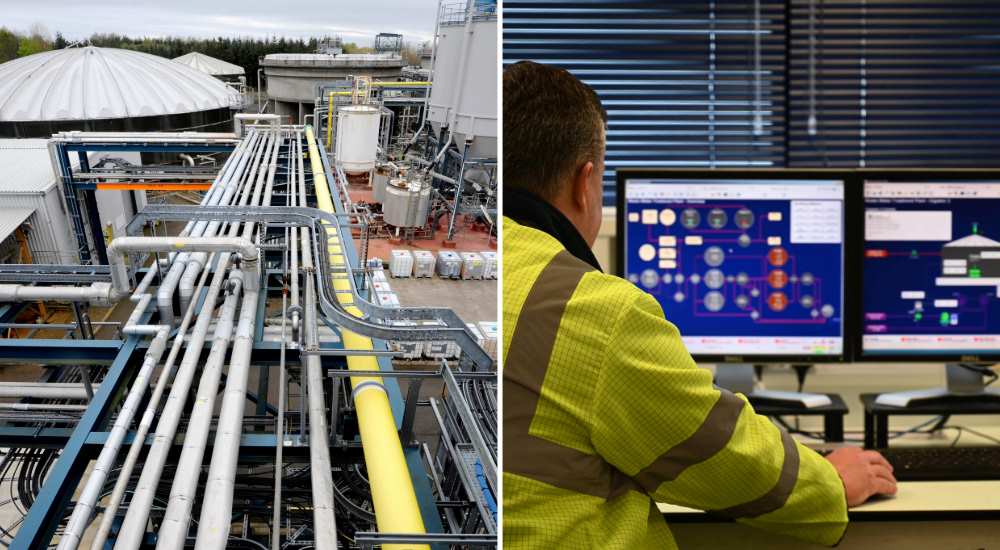

Compliance with BREF documents under the European Industrial Emissions Directive (IED) has long been established in sectors such as Food, Drink, and Milk (FDM). However, for large chemical processing sites - including Organic Fine Chemicals (OFC) installations covering industries from pharmaceuticals to paints - the regulatory framework is yet to come into effect. More details are contained in our guide on how IED will impact the chemical industry. The upcoming publication of the UK Waste Gas Common (WGC) BREF will trigger compliance requirements for these sites, aligning them with the Common Wastewater and Waste Gas (CWW) BREF.
These changes will deliver environmental benefits by driving stricter emission controls and enforcing the use of “Best Available Techniques” (BAT) for wastewater and waste gas treatment. However, the delays in implementation have already had costly consequences. Many companies have been forced to maintain ageing infrastructure well beyond its intended lifespan, increasing operational risks and delaying critical investment in new, compliant technologies.
This diverse sector is expected to fall into line with other sectors later this year with the publication of the Common Waste Gas Management (WGC) BREF, which in turn will trigger the Common Wastewater and Waste Gas (CWW) BREF for all remaining IED sectors.
The CWW BREF and the draft WGC BREF provide a guide for regulators to determine whether the industrial installations under their remit are adequately managing their environmental emissions. There are thresholds for overall size, with only the largest sites needing to comply. There are also limits for specific emissions, along with examples of process technology that should be put in place to abate emissions down to the prescribed levels.
Once the UK WGC is published (this is expected to be in Q3 2025), all new installations meeting the thresholds will be expected to be compliant. Existing installations should make plans to be compliant within four years (Q3 2029). This timeline is three years behind the process for the 27 EU states, so whilst UK sites have had more time to plan for the changes, the delays themselves have had a cost and performance impact.

The prolonged uncertainty around IED implementation has forced companies into an operational balancing act, continuing to maintain assets originally set for decommissioning years ago. Some critical infrastructure has remained in service for more than five years beyond its intended lifespan, placing a significant financial strain on organisations. Instead of retiring ageing equipment under the original regulatory timelines, they have been forced to keep investing in its upkeep.
Whilst it would seem sensible to implement the upgrades for IED early, to avoid the challenges of operating dated infrastructure, the reality is that many operational sites are unlikely to gain corporate approval for large capital upgrades while the legislation remains in draft form. Corporations are likely to be reluctant to risk investment in equipment that may not comply with the final version of the regulations or, indeed, go too far beyond the requirements. Sites are often limited in how they can spend their budget, so although they have local control, it can only be used to maintain the current status rather than fund improvements.
One clear example is the need to replace ancillary components that have exceeded their design life. Take bellows - flexible expansion joints essential for absorbing vibrations and reducing stress to protect pipes and equipment from damage. With the regulatory delay stretching into years, some sites have had to undertake large-scale replacement projects simply to keep ageing systems operational. On one site, the replacement of over 30 bellows has cost more than £100,000 - just one of many unexpected expenditures operators have had to absorb.
Beyond component replacement, companies must also cover the ongoing costs of maintaining assets that will become redundant. Equipment that should have been decommissioned still requires upkeep such as painting, corrosion prevention, and minor repairs - all of which demand time, resources, and budget allocation for assets that will eventually be removed.
More critically, extending the life of outdated equipment introduces more risk. As assets degrade, failures become more likely, leading to operational disruptions that could impact production schedules, regulatory compliance, and safety. In the worst cases, failures in ageing infrastructure could cause unplanned shutdowns, emergency repairs, or even environmental and safety incidents.
For example, it may have been a calculated risk to let a motor fail on duty/standby equipment, but once a second motor fails, urgent replacement is needed to restore resilience - despite knowing the asset will not be required when IED is implemented. This reactive spending, driven by regulatory delays, not only adds unexpected costs but also disrupts maintenance planning and diverts funds from other areas of the plant or long-term investments.

Navigating the delays and challenges around IED implementation requires a strategic approach that balances ongoing operational needs with future compliance. At Alpheus, are helping companies make informed decisions to minimise costs, manage risks, and maintain resilience by:
Through over 30 years of experience in the sector, and by taking a proactive and practical approach, we help businesses navigate regulatory delays with confidence by unnecessary costs, reducing compliance risks, and ensuring continued operational efficiency.